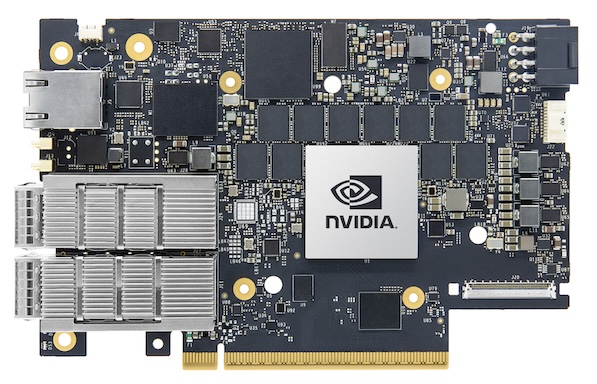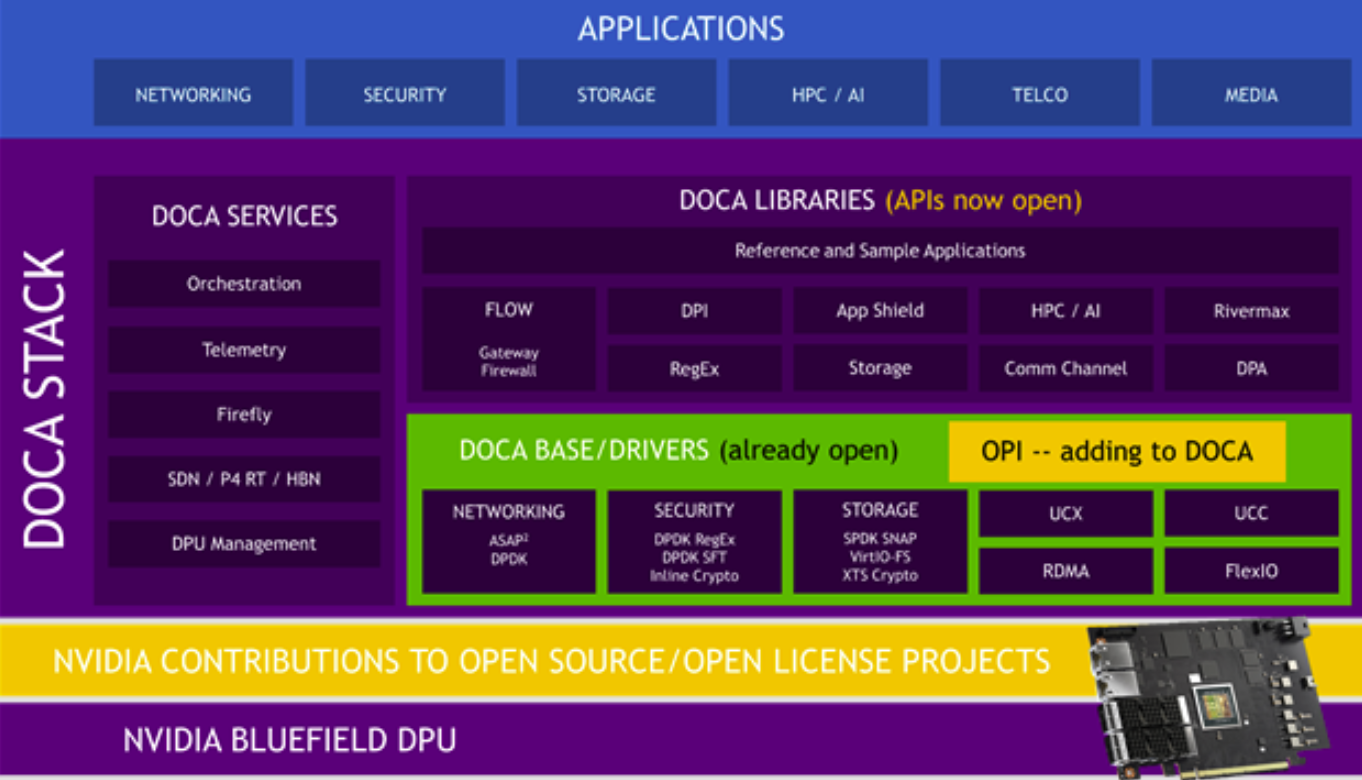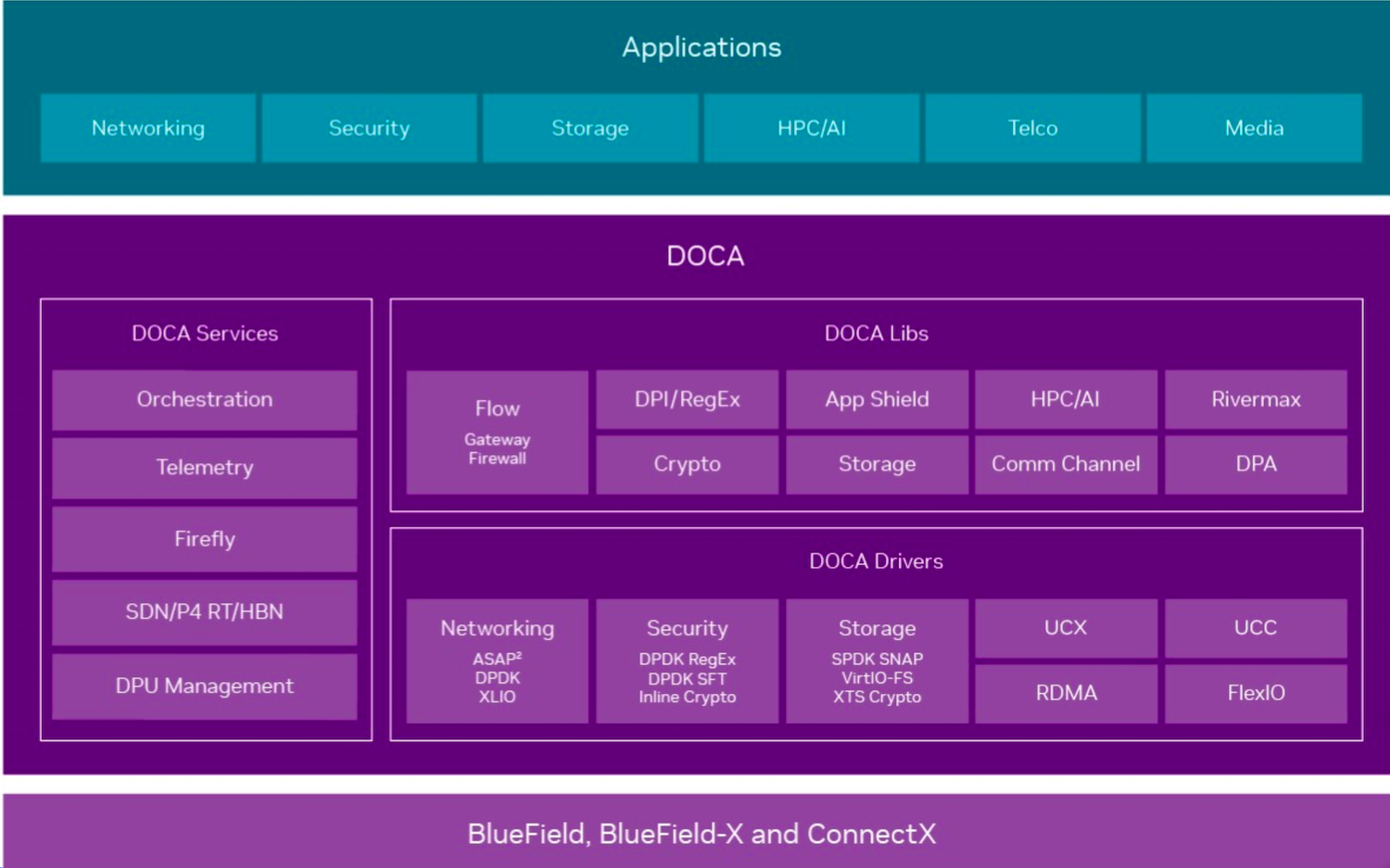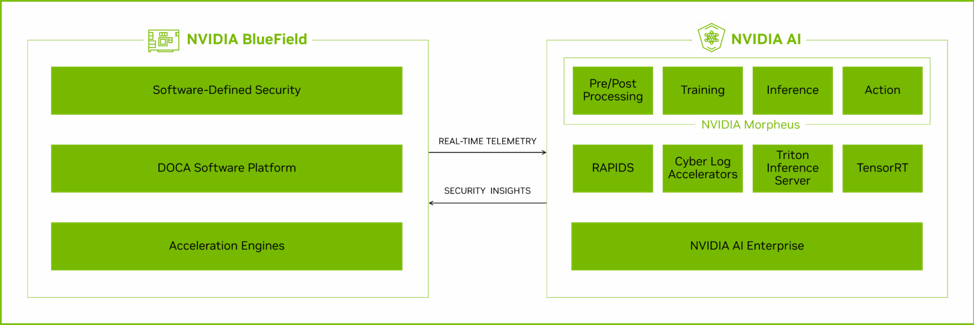NVIDIA DOCA Argus delivers real-time, agentless threat detection for AI workloads, using BlueField DPUs to enhance security without impacting performance.
As enterprises ramp up their adoption of AI, the need to secure the “AI factory”—the infrastructure where complex, agentic workflows are executed—has never been more urgent. NVIDIA’s latest advancements, particularly the DOCA software framework running on BlueField DPUs, reshape how organizations approach runtime cybersecurity for AI workloads. This article explores the distinct roles of CPUs and DPUs in this context, with a focus on how DOCA leverages DPU architecture to deliver next-generation security.

CPUs, DPUs, and DOCA
CPUs have long been the backbone of general-purpose computing, handling a wide range of tasks from application logic to system management. In contrast, DPUs are purpose-built to offload and accelerate data-centric operations, such as networking, storage, and security, freeing up CPU resources for core business logic.
NVIDIA DOCA (Data Center Infrastructure-on-a-Chip Architecture) is a software framework designed to unlock the full potential of BlueField DPUs. DOCA provides a platform for building, deploying, and managing data center services—including advanced security—directly on the DPU, independent of the host CPU.
Architectural Comparison: CPU vs. DPU for AI Security
The traditional approach to runtime security relies on host-based agents running on CPUs. While effective in many scenarios, this model introduces overhead, can impact performance, and is vulnerable if the host is compromised. DPUs, by contrast, operate independently of the host, enabling out-of-band security operations that are both efficient and resilient.
Here is a high-level comparison of CPU and DPU strategies in the context of AI security powered by DOCA.
| Feature/Capability | CPU (Host-Based) | DPU (BlueField with DOCA) |
|---|---|---|
| Security Operations | Runs on host, uses agents | Runs on DPU, agentless |
| Performance Impact | Can introduce overhead | Zero-overhead for host workloads |
| Visibility to Attackers | Visible, can be disabled | Invisible, isolated from host |
| Integration | Requires host integration | Integrates with enterprise security platforms (SIEM, SOAR, XDR) |
| Resilience | Vulnerable if host is compromised | Remains operational if host is attacked |
| Scalability | Limited by host resources | Scales with DPU deployment |
DOCA Argus: Real-Time, Agentless Threat Detection
NVIDIA DOCA Argus exemplifies the advantages of the DPU-centric approach. Operating entirely on the BlueField DPU, Argus delivers real-time threat detection using advanced memory forensics, achieving detection speeds up to 1,000 times faster than traditional agentless solutions, according to NVIDIA. This is accomplished without impacting system performance, as all security operations are offloaded from the host CPU.
Argus’s agentless design means there is no need for software agents or host-based integration, which reduces operational complexity and the attack surface. By running outside the host, Argus remains invisible to attackers, even if the host system is compromised. Integration with enterprise security platforms (SIEM, SOAR, XDR) enables continuous monitoring and automated threat mitigation, extending existing cybersecurity capabilities to AI infrastructure.
Use Cases: Securing AI Workloads at Scale
Multi-Tenant AI Factories
In environments where multiple teams or customers share the same AI infrastructure, isolating and protecting workloads is critical. BlueField DPUs with DOCA Argus provide runtime protection for containerized and multi-tenant environments, ensuring that threats are detected and contained without impacting performance or requiring changes to the host.
Autonomous Data Centers
As enterprises deploy agentic AI models and autonomous agents at scale, the volume and velocity of data increase dramatically. DOCA Argus, optimized with real-world threat intelligence, surfaces only validated threats, reducing false positives and alert fatigue for security teams. This enables organizations to maintain a strong security posture even as their AI operations scale.
Industry Collaboration and Ecosystem
NVIDIA and Cisco are working together to create secure artificial intelligence (AI) systems. By adding security at every level of the AI process, from hardware to software, companies can confidently use and expand their AI applications, knowing that protection is built in from the beginning.
As Jeetu Patel, EVP and Chief Product Officer at Cisco, notes, the key to unlocking innovative AI use cases is ensuring safety and security from the outset. NVIDIA and Cisco’s joint architecture provides the foundation for enterprises to scale AI while safeguarding their most valuable data.
The DPU Advantage for AI Security
The shift from using CPUs to using DPUs for security marks a significant change in how we protect AI factories. With frameworks like NVIDIA DOCA, businesses can manage security tasks with DPUs. This allows them to detect threats in real-time without needing agents, making it harder for attackers to spot their security measures. This method improves security while maintaining high performance and efficiency. These aspects are crucial for today’s large-scale AI systems.
Engage with StorageReview
Newsletter | YouTube | Podcast iTunes/Spotify | Instagram | Twitter | TikTok | RSS Feed



